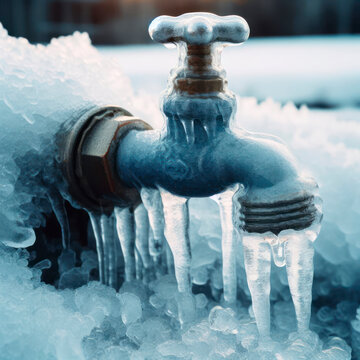What are your thoughts and feelings on 6 Ways to Prevent Frozen Pipes?

Cold weather can ruin your pipes, particularly by freezing pipes. Below's just how to avoid it from occurring and what to do if it does.
Introduction
As temperatures decline, the threat of icy pipes boosts, potentially bring about expensive repair services and water damage. Understanding exactly how to avoid icy pipes is crucial for house owners in cold environments.
Comprehending Icy Pipelines
What creates pipelines to ice up?
Pipes ice up when revealed to temperatures listed below 32 ° F (0 ° C) for expanded periods. As water inside the pipes freezes, it broadens, taxing the pipe wall surfaces and possibly triggering them to burst.
Risks and problems
Frozen pipelines can lead to supply of water disruptions, property damages, and expensive repairs. Burst pipelines can flooding homes and cause comprehensive structural damage.
Indicators of Frozen Pipes
Recognizing icy pipes early can prevent them from rupturing.
How to recognize frozen pipes
Seek lowered water flow from faucets, unusual odors or noises from pipelines, and visible frost on exposed pipelines.
Prevention Tips
Insulating vulnerable pipes
Cover pipelines in insulation sleeves or make use of warmth tape to protect them from freezing temperature levels. Concentrate on pipelines in unheated or external areas of the home.
Heating strategies
Maintain interior areas appropriately heated up, particularly locations with plumbing. Open up cabinet doors to allow cozy air to distribute around pipes under sinks.
Shielding Exterior Plumbing
Garden tubes and outside taps
Separate and drain garden tubes before winter. Set up frost-proof faucets or cover outdoor faucets with shielded caps.
What to Do If Your Pipelines Freeze
Immediate activities to take
If you believe frozen pipelines, maintain taps open up to relieve pressure as the ice melts. Utilize a hairdryer or towels soaked in hot water to thaw pipes gradually.
Long-Term Solutions
Architectural modifications
Consider rerouting pipes away from outside wall surfaces or unheated areas. Add extra insulation to attics, basements, and crawl spaces.
Updating insulation
Buy top notch insulation for pipelines, attic rooms, and walls. Appropriate insulation aids preserve regular temperature levels and minimizes the danger of icy pipelines.
Conclusion
Stopping icy pipes requires aggressive actions and fast reactions. By comprehending the causes, indicators, and preventive measures, house owners can safeguard their pipes throughout cold weather.
6 Proven Ways to Prevent Frozen Pipes and Protect Your Home
Disconnect and Drain Garden Hoses
Before winter arrives, start by disconnecting your garden hoses and draining any remaining water. Close the shut-off valves that supply outdoor hose bibs and leave the outdoor faucet open to allow any residual water to drain. For extra protection, consider using faucet covers throughout the colder months. It’s also important to drain water from any sprinkler supply lines following the manufacturer’s directions.
Insulate Exposed Pipes
Insulating your pipes is an effective way to prevent freezing. Pipe insulation is readily available at home improvement stores and is relatively inexpensive. Pay close attention to pipes in unheated areas such as the attic, basement, crawl spaces, or garage. Apply foam insulation generously to create a buffer against the cold. You can also wrap your pipes in heat tape or thermostat-controlled heat cables for added warmth.
Seal Air Leaks
Inspect your home for any cracks or openings that could let in cold air. Seal any holes around the piping in interior or exterior walls, as well as the sill plates where your home rests on its foundation. Additionally, make sure to keep your garage door closed unless you’re entering or exiting. Leaving it open creates a significant air leak that can lead to frozen pipes.
Allow Warm Air Circulation
During cold snaps, it’s essential to allow warm air to circulate evenly throughout your home. Leave interior doors ajar to promote better airflow. Open kitchen and bathroom cabinets to help distribute heat consistently around the rooms. If you have small children or pets, be sure to remove any household chemicals or potentially harmful cleaners from open cabinets for safety.
Let Faucets Drip
A small trickle of water can make a big difference in preventing ice formation inside your pipes. When temperatures drop significantly, start a drip of water from all faucets served by exposed pipes. This continuous flow helps prevent the water from freezing. Additionally, running a few faucets slightly can relieve pressure inside the pipes, reducing the chances of a rupture if the water inside does freeze.
https://choateshvac.com/6-proven-ways-to-prevent-frozen-pipes-and-protect-your-home/

I was shown that article on How to prepare your home plumbing for winter weather through a buddy on another web blog. Are you aware of somebody else who is excited about the niche? Please feel free to promote it. Thank you for being here. Return soon.
Book An Estimate Now